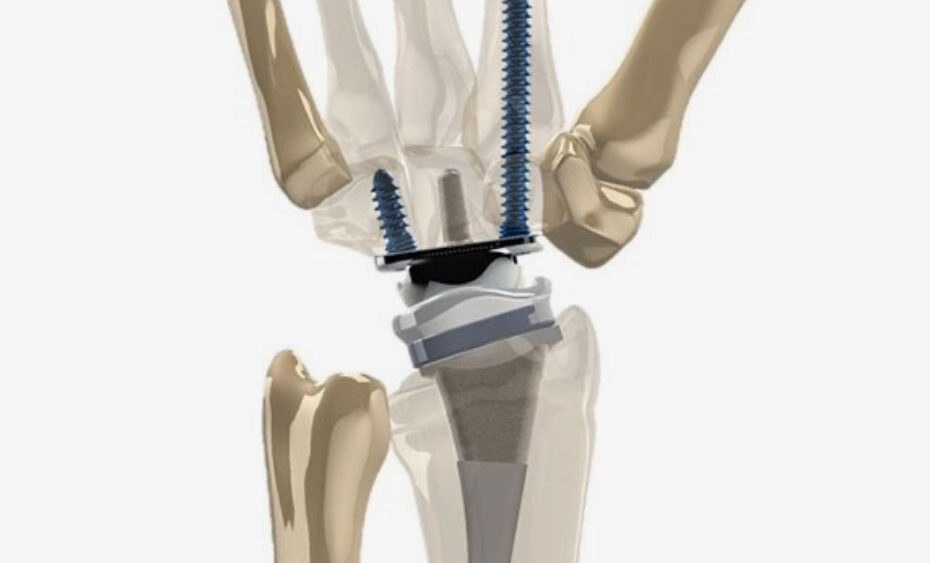Sixty-nine-year-old Mark Eisen says he waited seven years for a surgery he hopes will change his life. Last week, he had the first total wrist replacement with KinematX™, a new implant co-designed by Scott Wolfe, MD, chief emeritus of the Hand and Upper Extremity Service at Hospital for Special Surgery (HSS). Dr. Wolfe performed the surgery on April 15.
Severe arthritis in his right wrist caused ongoing pain and prevented Mr. Eisen, who lives in Atlanta, from engaging in activities he enjoys. He is right-handed, which makes it even more difficult. Seven years ago, he started to investigate treatments and learned about total wrist replacement surgery. But unlike knee and hip replacements, which are common and have excellent outcomes, wrist replacement surgery has not enjoyed the same degree of success.
The wrist is highly complex, made up of more than a dozen individual joints formed by eight small bones that collectively make up the wrist. It was previously believed that the wrist moved the hand in two different planes – up and down or side to side. The research by Drs. Wolfe and Crisco demonstrated that during many activities, such as throwing a ball, hammering a nail or pouring a glass of water, the wrist doesn’t move in just one of these directions. It accomplishes the action by combining movements in both planes.
“Traditional wrist replacements often constrain the wrist to move in one plane at a time, and this puts stress on surrounding joints,” said Dr. Wolfe. “The increased loads on the implant-bone interface often lead to prosthesis loosening and mechanical failure. In addition, traditional implants often make it difficult or impossible to return to some activities, such as tennis or golf.”
The KinematX™ is the only wrist replacement that is computer-designed to mimic the kinematics, or motion, of a human wrist – movements that are instrumental in throwing, hammering and other high-performance activities, according to Dr. Wolfe. The unique design should enable the implant to be more durable than traditional wrist replacements.
Surgery with the KinematX™ entails replacing the proximal carpal row bones of the wrist, which are those most severely affected by osteoarthritis. The device utilizes modular components in various sizes to replicate the complex anatomy of the wrist and allow the motion necessary for occupational, recreational and household activities. Read more.
Source: Newswise



Comments are closed.